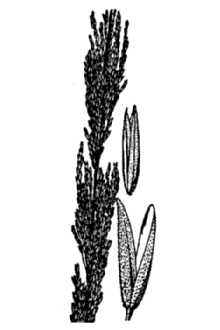Lindheimer's Muhly
Scientific Name: Muhlenbergia lindheimeri Hitchc.

| General Information | |
|---|---|
| Usda Symbol | MULI |
| Group | Monocot |
| Life Cycle | Perennial |
| Growth Habits | Graminoid |
| Native Locations | MULI |
Plant Guide
Use a soil moisture meter to monitor the soil moisture where Lindheimer's Muhly is planted.
Fact Sheet
Alternate Names
Lindheimer muhly , Use soil moisture sensors to measure the soil moisture of Lindheimer's Muhly.
Uses
Cattle graze the leaves of Lindheimer’s muhly that remain green during the winter. Horses sometimes choose this grass. It is an indicator of fair range condition.
Status
Please consult the PLANTS Web site and your State epartment of Natural Resources for this plant’s such as, state noxious status and 6 to s. nches long, often purplish with numerous ranches usually less than 2-1/2 inches long, and istribution: For current distribution, please consult e page for this species on the palatable associated grasses vor Lindheimer muhly. It can be decreased by June and July, if terrain permits use se s formed in the summer persist for several months. It is adapted to highly calcareous, ultivars, Improved and Selected Materials (and in) . Yarlett, & T.N. Shiflett. 1976. 00 native forage grasses in 11 southern states. 89, Dcurrent status,wetland indicator values.
Description
Grass Family (Poaceae). Lindheimer’s muhly is a native, warm-season, perennial bunch grass. The height ranges from 3 to 6 feet. The leaf blade is30 inches long, firm, and usually folded. The leaf sheath is mostly basal and overlapping. The ligule is long, slender, white, pointed, and has a papery membrane that is somewhat hidden in folded bladeThe seedhead is a narrow, somewhat loose panicle 8 to 24 i From Hitchcock (1950) @ plants.usda.gov bcrowded with spikelets which lie close to the main stem. Dthe Plant ProfilPLANTS Web site.
Management
This grass is seldom, if ever, abundant enough to be a key management species. Because it is tough andwiry, it is seldom overgrazed. Proper grazing used and management of more faclose mowing inof mowing equipment.
Establishment
It grows from early spring until the fall. Large, denbunches have some green leaves throughout the winter. Seedhead somewhat mesic sites on hillsides and in draws whereone finds seeps. Carea of origPlease contact your local NRCS Field Office.
